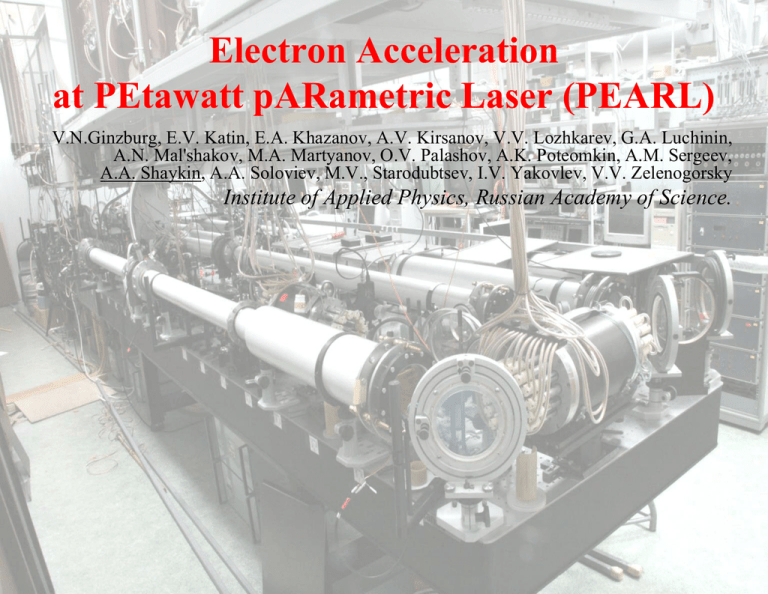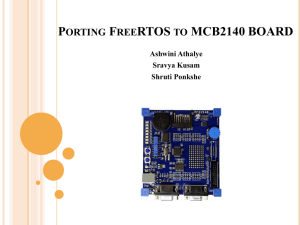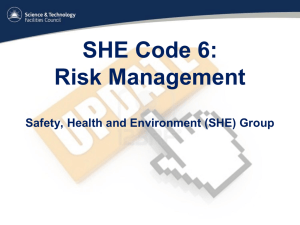Electron Acceleration at PEtawatt pARametric Laser
advertisement

Electron Acceleration at PEtawatt pARametric Laser (PEARL) V.N.Ginzburg, E.V. Katin, E.A. Khazanov, A.V. Kirsanov, V.V. Lozhkarev, G.A. Luchinin, A.N. Mal'shakov, M.A. Martyanov, O.V. Palashov, A.K. Poteomkin, A.M. Sergeev, A.A. Shaykin, A.A. Soloviev, M.V., Starodubtsev, I.V. Yakovlev, V.V. Zelenogorsky Institute of Applied Physics, Russian Academy of Science. IAP RAS Introduction PEtawatt pARametric Laser (PEARL) Electron acceleration: diagnostics Electron acceleration: results Conclusion IAP RAS Introduction. Motivation Petawatt lasers are promising for future biomedical applications Their interactions with targets at relativistic intensities > 1019 W/cm2 result in production of hard X-Rays and Mev particles that can be used for diagnostic and treatment - Phase-contrast X-Ray imaging - Isotope factories for PET - Laser ion sources for hadron therapy - Table-top X-FEL - Material sciences The underlying physics is essentially nonlinear and put a number of problems to be studied in the frame of theory and laboratory experiments IAP RAS Introduction. Laser ion sources for hadron therapy Proton Accelerator Laser system magnet Ion beam ~30m Laser Plasma Ion Source (~10m、 ~billion yen (~10 million $)) Synchrotrone Ion Source (~100m、 ~10 billion yen (~100 million $)) IAP RAS Mamiko Nishiuchi et al, LPHYS’05 Advanced Photon Research Center Japan Atomic Energy Research Institute Introduction. electron acceleration. linear accelerator laser accelerator 50 GeV LINAC at Stanford 3 км Laser beam Gas jet field ~ 10MeV/m 2мм field ~ 100 GeV/m IAP RAS Introduction. electron acceleration. Geddes et al, Nature 431, 538 (2004) E ~ 90 MeV DE/E ~ 4% Div. ~ 2 mrad J. Faure et al., Nature 30 septembre 2004 He, H2 eIpk ~ 1018 W/cm2 10 TW, 40 fs Bubble formation in relativisticallyunderdense regime ne S 1 IAP RAS a 0 n c •A.Pukhov et al, Appl Phys B, 74, 355 (2002) experiment 170Мэв PIC Introduction PEtawatt PEtawatt pARametric Laser (PEARL) PEARL pARametric Electron acceleration: diagnostics Electron acceleration: results Conclusion 24 J @ 910 nm 43 fs IAP RAS Laser PEtawatt pARametric Laser (PEARL). Petawatt laser systems type I type II type III Gain medium Nd:glass Ti:sapphire KD*P Energy source Nd:glass Nd:glass Nd:glass Pump no 2w Nd 2w Nd Pump duration, ns no <30 1 Amplifier aperture, cm 40х40 8 40х40 Minimum duration, fs 250 25 25 Efficiency (1w Nd фс), % 80 15 10 Number of PWs from 1 kJ 1w Nd 3.5 (3) 8 (3) 4 Maximum power obtained, PW 1.3 PW 0.85 PW 0.56 PW LLNL, 1997 JAEA 2004 IAP 2006 Diffraction grating damage threshold IAP RAS Ti:sapphire damage threshold PEtawatt pARametric Laser (PEARL). OPCPA vs CPA Advantages of OPCPA: broad gain bandwidth high aperture considerable decrease in thermal loading significantly lower level of ASE very high gain no self-lasing no backscattering from a target Disadvantages of OPCPA: high precision synchronization high quality of a pump beam short (1ns) pump pulse duration IAP RAS PEtawatt pARametric Laser (PEARL). Physics of OPCPA. KD*P vs KDP. 0,35 KD*P bandwidth KD P bandwidth KD*P absorption KDP absorption 1500 0,3 0,25 1200 1 527 nm 900 1 911 nm -1 KD*P DKDP 10,2 1250 nm 0,15 600 0,1 generated phase matching 300 lsignal=2lpump=1053nm 0 750 850 950 0,05 1050 1150 1250 0 1350 signal wavelength, nm IAP RAS ordinary wave absorbtion, cm (dots) -1 FWHM of gain spectra, cm (lines) 1800 superbroadband phasematching V.V.Lozhkarev, G.I.Freidman, V.N.Ginzburg, E.A.Khazanov, О.V.Palashov, A.M.Sergeev, I.V.Yakovlev. Laser Physics, 15, 1319 (2005). PEtawatt pARametric Laser (PEARL). Architecture Cr:Forsterite fs-laser l=1250nm Synchronization system Nd:YLF Q-switch laser l=1053nm 10mJ 12nc Pulse shaper 2nJ 40 fs 1nJ 0.5 ns Stretcher 40 fs 0.5 ns 1mJ 1.5ns CW Yb:fiber pump 10W l=1050…1080nm OPA I KD*P 50 mJ 50 fs 2 Hz l=911nm 0.8mJ OPA II 0.5ns KD*P Compressor 0.5 ns 50 fs 1J 1.5ns Two-stage Nd:YLF amplifier Nd:glass amplifier 2J 1.5 ns 300J 1ns 2w l=1250nm 2w 170J 1ns OPA III KD*P 10cm dia l=911 nm 50 mJ 0.5 ns 38J 0.5ns First phase (TW level) Compressor 0.5ns 50fs 24J 43fs Second phase (PW level) Freidman G., Andreev N., Ginzburg V., Katin E., Khazanov E., Lozhkarev V., IAP RASPalashov O., Sergeev A., Yakovlev I. Proc. SPIE, v.4630, p.135-146, 2002. PEtawatt pARametric Laser (PEARL). Nd:glass laser output beam 300J, 1ns 50 mrad 2.44l/D=21mrad 10 20 30 40 50 60 90мм 70 0 IAP RAS 10 20 30 40 50 60 70 PEtawatt pARametric Laser (PEARL). Energy characteristics of final OPCPA Efficiency, % 38 J 40 35 35 Pulse energy. J 2.44l/D=21mrad 5 25mrad 10 15 30 30 Output pulse energy, J 40 20 Efficiency, % 25 25 25 30 35 20 20 15 15 10 10 40 45 20 40 5 5 60 80 0 0 100 120 0 30 60 90 120 150 Pump pulse energy, J 180 140 160 180 200 IAP RAS 220 5 10 15 20 25 30 35 40 45 PEtawatt pARametric Laser (PEARL). Compressed 0.56 PW pulse 1 ACF experiment ACF of 33fs FTL pulse ACF, a.u. 0.75 0.5 0.25 0 -200 300 400 500 600 -150 -100 700 24 J /43 fs=0.56 PW -50 0 time, fs 50 100 150 Contrast: 108 (0.5ns window) 104 (1ps window) Lozhkarev V.V., Freidman G.I., Ginzburg V.N., Katin E.V., Khazanov E.A., Kirsanov A.V., Luchinin G.A., Mal'shakov A.N., Martyanov M.A., Palashov O.V., Poteomkin A.K., Sergeev A.M., Shaykin A.A., Yakovlev I.V. Laser Physics Letters, 4, 421-427 (2007). IAP RAS 200 PEARL. 0,56PW. PEtawatt pARrametric Laser CPA vs OPCPA laser systems 10000 Vilnius U., Lithuania CPA Rutherford Lab, UK 1000 laser power, TW SIOM, China 100 Rochester, USA LLNL , USA 10 IAP, Russia 1 LLNL , USA Rutherford Lab, UK 0.1 ILE, Japan 0.01 JAEA, Japan 0.001 1991 1993 1995 1997 1999 2001 2003 2005 2007 2009 IAP RAS year SIOM, China Texas U., USA Sarov - IAP, Russia Introduction PEtawatt pARametric Laser (PEARL) Electron acceleration: diagnostics Electron acceleration: results Conclusion IAP RAS Electron acceleration: diagnostics. The experimental setup at PEARL facility. Energy = 10 - 15 J Plasma density: 3×1018-3×1019cm-3 spot size = 15 mm ( ~1.5 DL) IAP RAS Intensity = 1020 W/cm2 (a0~7) Focusing – f/6 Jet diam = 2, 5, 10 mm Electron acceleration: Gas jet interferometric diagnostics. interferogramm N2, 80 bar (back pressure) mm 0 1 2 3 4 5 6 7 0 1 gas jet 33 2 3 mm He-Ne N2 80 bar 19 x 10 Na, 1019 cm-3 2.5 4 1 0 -1 -2 -3 -4 -5 -6 1.5 -7 N 22 11 0.5 CCD R, mm 00 IAP RAS 0 -3 1 2 -2 -1 3 0 mm 4 1 5 2 6 3 7 Electron acceleration: Plasma channel interferometric diagnostics. Main characteristics of the diagnostics: •spatial resolution ~ 4 mm •phase distortions sensitivity ~ 50 nm (l/20) •time resolution ~ 100 fs (because of optics in diagnostic channel) shift interference The constructed optical scheme also can be used to obtain a shadowgram of the plasma channel. IAP RAS Electron acceleration: 1mm Plasma channel interferometric diagnostics. Probe pulse Pump pulse IAP RAS To interferometer Electron acceleration: Thomson scattering diagnostics. CCD camera placed upper the nozzle CCD eНе IAP RAS 2 mm Introduction PEtawatt pARametric Laser (PEARL) Electron acceleration: diagnostics Electron acceleration: results Conclusion IAP RAS Electron acceleration: Electron spectra diagnostics. The main problem: angular dispersion of electron bunches trajectories. A solution is to use a couple of scintillators. The use of two-screen electron spectrometer allows us to take into account the angular dispersion of generated electron bunches and hence significantly increase the accuracy 2.5mrad of the spectrum measurements for our setup. 24 Electron acceleration: Electron spectra diagnostics. e- bunch angle = -0.011 angular spectra = 4,6 mrad W = 260 MeV (20 MeV) dW = 18 MeV (10 MeV ) charge = 18 pC IAP RAS -20 MeV +20MeV Electron acceleration: Electron spectra diagnostics. e- banch angle = -0.011 angular spectra = 2,5 mrad X4.5 mrad W = 190 MeV dW = <10 MeV charge = 11 pC IAP RAS Electron acceleration: take into account scintillator scattering . gas jet optical beam nozzl e 16 mrad 12 alpha2 - alpha1 8 alpha1 alpha2 4 MeV Экспоненциальный (alpha2 - alpha1) 0 0 IAP RAS 50 100 150 200 250 Electron acceleration: Electron spectra diagnostics. dW=5 e- banch angle = -0.011 angular spectra = 2,5 mrad X4.5 mrad W = 190 MeV dW = <10 MeV charge = 11 pC IAP RAS dW=15 Electron acceleration: spectra diagnostics. 120 pC 109MeV W ~ 100 MeV charge ~ 200 pC Plasma density: 3×1018 - 3×1019cm-3 200 pC 102MeV 80 pC 97MeV Energy = 10 - 15 J Focusing – f/6 spot size = 15 mm (~1.6 DL) Intensity 1020 W/cm2 (a0~7) IAP RAS Jet diam = 2, 5, 10 mm Electron acceleration: spectra diagnostics. W = 150 – 250 MeV charge = 10 – 25 pC Plasma density: 3×1018-3×1019cm-3 Energy = 10 - 15 J Focusing – f/15 spot size 27 mm (~1.4 DL) Intensity 1019 W/cm2 (a0~2) Jet diameter = 10 mm IAP RAS 2.44l/D =21mra d Electron acceleration experiments in IAP RAS W=15J, τ=45fs, d=15μm, I=1.0×1020W/cm2, λ=0.91 μm, a0=9 Numerical simulation: ponderomotive PIC code (I. Kostyukov) 10 17см-3 10 18см-3 10 19см-3 IAP RAS Conclusions experiments on PEARL facility in the Institute of Applied Physics showed: 150-250 MeV electrons (+/- 10%, 2mrad, 20 pC, 1GeV/cm) 50-100 MeV electrons (+/- 15%, 5mrad, 200 pC ) IAP RAS Electrons acceleration : What we may/must do. 1 0.9 0.8 0.7 Laser beam 0.6 0.5 0.4 0.3 0.2 0.1 10 15 20 25 30 IAP RAS 35 40 45 50 0 Gas jet IAP RAS IAP RAS 20 25 30 35 40 20 30 40 50 60 70 80 90 mm 0 10 20 30 40 50 60 70 0 20 40 60 mm 80 100 36 Характеристики пучка в фокусе 50 мкм E = 3.5 Дж τ = 60 фс I = 8.5х1018 Вт/см2 a 0 8 . 6 10 10 8.5 x 1018 Вт/cм2 4.25 x 1018 Вт/cм2 0 l [ мкм ] I [ Вт / cм ] 2 а0 = 2.3 -50 мкм 1 50 мкм 0 e 1 b 2 k 2 a c 2 ab E 0.5 IAP0RAS Гаусс 17 Гаусс 27 Гаусс 22 Реальный 50 100 150, мкм 2b, мкм 2a, мкм с, мкм k (эллип) e (эксц) b a 0 2а 2b 0.5 14 23 18 1/e 17 27 22 1/e2 24 38 30 0,61 0,79 0,63 0,78 0,63 0,78 IAP RAS






